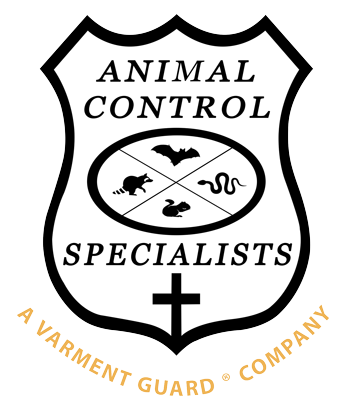1. Lyme Disease: Nuisance wildlife such as deer and mice are carriers of the black-legged tick, which is responsible for transmitting Lyme disease. This bacterial infection can cause a range of symptoms, including fever, fatigue, joint pain, and a characteristic bull’s-eye rash. With Ohio being a hotspot for tick activity, residents should be cautious when spending time outdoors to prevent tick bites.
2. Rabies: Bats, raccoons, and skunks are common carriers of the rabies virus in Ohio. This viral disease affects the nervous system and can be transmitted to humans through bites or scratches from infected animals. Symptoms include fever, headache, weakness, confusion, and in later stages, aggression and hallucinations. It is crucial to avoid contact with wildlife and ensure pets are vaccinated against rabies.
3. Histoplasmosis: Ohio’s abundance of bird populations, particularly pigeons and starlings, contributes to the prevalence of histoplasmosis. This fungal infection is contracted by inhaling spores found in bird droppings. While most people experience mild flu-like symptoms or none at all, severe cases can lead to lung infections and even spread to other organs.
4. Tularemia: Nuisance wildlife such as rabbits and rodents can carry the bacterium Francisella tularensis, which causes tularemia. This infectious disease can be transmitted to humans through direct contact with infected animals, insect bites, or contaminated water or soil. Symptoms vary depending on the type of exposure but commonly include fever, skin ulcers, swollen lymph nodes, and respiratory problems.
5. Leptospirosis: Wildlife such as raccoons and rodents can carry the Leptospira bacteria responsible for leptospirosis. This bacterial infection is usually acquired through contact with water or soil contaminated by urine from infected animals. Symptoms range from mild flu-like symptoms to severe cases involving liver and kidney damage. In Ohio, this disease is more commonly seen in rural areas where wildlife-human interactions are more frequent.
It is essential for Ohio residents to be aware of these common diseases transmitted by nuisance wildlife and take necessary precautions to minimize the risk of exposure. By understanding the potential health risks associated with wildlife encounters, individuals can protect themselves and their communities from these preventable illnesses.
5 Common Diseases Transmitted by Nuisance Wildlife in Ohio
Rabies
Rabies is a viral disease that affects the central nervous system of mammals, including humans. It is most commonly transmitted through the bite or scratch of an infected animal. In Ohio, wildlife such as raccoons, skunks, and bats are known carriers of rabies. If you come into contact with a potentially rabid animal, it is crucial to seek medical attention immediately. Symptoms of rabies in humans include fever, headache, confusion, and difficulty swallowing.
Lyme Disease
Lyme disease is caused by the bacterium Borrelia burgdorferi and is transmitted to humans through the bite of infected black-legged ticks. These ticks are commonly found in wooded areas and tall grasses, which are often frequented by wildlife such as deer and rodents. Symptoms of Lyme disease include fever, fatigue, headache, muscle and joint aches, and swollen lymph nodes. If left untreated, it can lead to more severe complications affecting the heart, joints, and nervous system.
Leptospirosis
Leptospirosis is a bacterial infection that can be transmitted to humans through contact with water or soil contaminated with the urine of infected animals. In Ohio, wildlife such as raccoons, skunks, and rodents can carry the bacteria. Symptoms of leptospirosis in humans can range from mild flu-like symptoms to severe illness affecting the liver, kidneys, and other organs. It is important to avoid contact with potentially contaminated water or soil and seek medical attention if symptoms arise.
Giardiasis
Giardiasis is a parasitic infection caused by the protozoan parasite Giardia lamblia. It can be transmitted to humans through the ingestion of water or food contaminated with the feces of infected animals, including wildlife. Symptoms of giardiasis include diarrhea, abdominal pain, bloating, and nausea. It is essential to practice good hygiene and avoid consuming untreated water or improperly washed fruits and vegetables when in areas where wildlife may have contaminated the environment.
Hantavirus Pulmonary Syndrome
Hantavirus pulmonary syndrome (HPS) is a severe respiratory disease caused by exposure to the hantavirus. In Ohio, the white-footed deer mouse is the primary carrier of the virus. Humans can become infected by inhaling dust particles contaminated with the urine, droppings, or saliva of infected mice. Symptoms of HPS include fever, muscle aches, fatigue, and shortness of breath. In severe cases, it can lead to respiratory failure and death. It is crucial to take precautions when cleaning up areas with potential rodent infestations and avoid direct contact with rodents.
Remember, if you suspect you have been exposed to any of these diseases, it is vital to seek medical attention promptly. Wildlife control professionals can also assist in identifying and removing nuisance wildlife to minimize the risk of disease transmission. Stay vigilant and prioritize your health and safety when dealing with wildlife encounters in Ohio.
Contact For Wildlife Control Help
Thank you for taking the time to read about Animal Control Specialists, LLC. We understand that dealing with unwanted wildlife can be a stressful and urgent matter. Our team of experienced professionals is ready to provide you with prompt and effective animal removal services. Whether you are facing a raccoon in your attic or a snake in your basement, we have the expertise to handle any situation. Don’t hesitate to reach out to us at (330) 608-1718 if you require immediate assistance. We are available 24/7 to ensure your safety and peace of mind. Trust Animal Control Specialists, LLC to handle your animal removal needs efficiently and compassionately.
